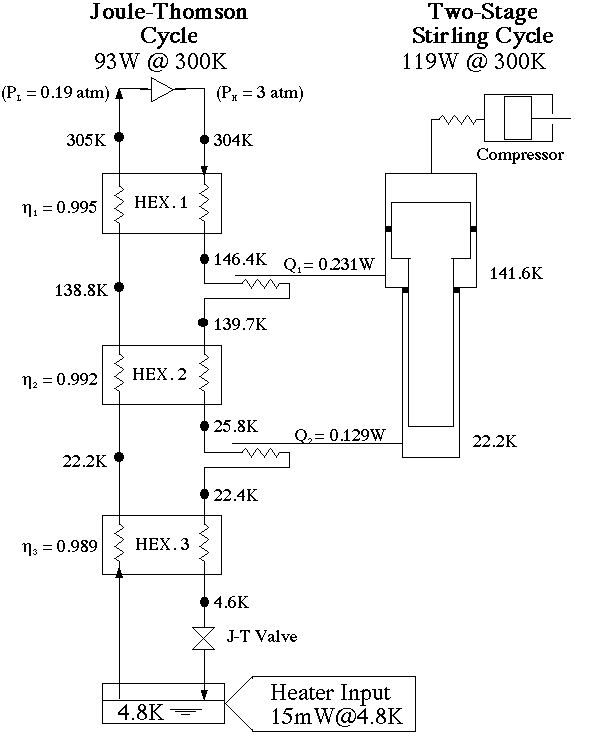HII/L2 Mission
3 WARM LAUNCH
Next, we propose a ``warm-launch, cooled telescope'' design
concept for the new infrared satellite. This concept means that
the telescope and focal plane instruments are warm when the satellite
is launched, but are cooled in orbit.
SIRTF also has a warm-launch, cooled telescope, but
still has a vacuum vessel and a liquid helium tank to cool
its focal plane instruments6.
Here we propose a satellite with no liquid helium.
The satellite does not need heavy vacuum
vessels and He tanks any more,
and the mass of the satellite can be reduced
dramatically. Hence we can increase the size of the telescope
to a level which can be never achieved with the conventional infrared
telescope design.
We have two methods to cool the telescope in orbit:
- Radiative Cooling
As mentioned in the previous section, radiative cooling
works very effectively at the S-E L2. Radiative cooling alone
can cool the telescope to 20 K, which is low enough for
near-infrared observations.
- Cryogenic Mechanical Cooler
To cool the telescope and focal plane instruments below 20 K,
we propose to use cryogenic mechanical coolers.
Two-stage Stirling cycle coolers are to be onboard the
ASTRO-F/IRIS mission4. The cooler is now under extensive
checkouts, and is to be flight-proven in 2003.
Since the lowest temperature of the two-stage
Stirling cycle is above 10 K,
we are now developing
a Joule-Thomson type cooler to achieve lower temperature.
Figure 3 shows the test configuration and
its results; we successfully demonstrated a cooling power
of 15 mW at 4.8 K.
The effective radiative cooling at the S-E L2 point makes
the cryogenic coolers work more efficiently. Hence, even with the cryogenic
coolers, it is very important to cool most of the observations instrument
by radiation.

Figure 3: Test results of a Joule-Thomson cooler
designed for space applications. We used a two-stage
Stirling cycle to cool two intermediate stages of the
Joule-Thomson cycle.
We put 15 mW of heat load to the
coldest stage.



Previous: 2.3 Technical Feasibility
Up: HII/L2 mission: future Japanese
Next: 4 HII/L2 MISSION
Apri 18, 1998
admin @ ir.isas.jaxa.jp

